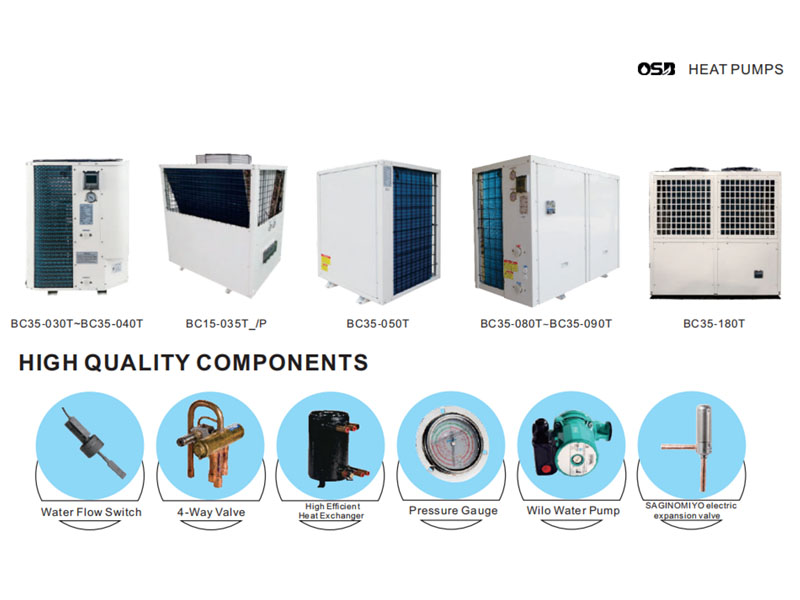
System Design
If heat pump selection is not a problem, it cannot be said that the whole house heating system is reasonable, because the system includes a heat pump unit and its end system, such as floor heating, radiators or fan coils. The energy consumption is very different between these heating ways. Since the requirement of water temperature is different at different ends, the required amount of heat is naturally not the same.
Generally speaking, the requirement of under floor heating for water temperature is the lowest, normally in the range of 35℃-40℃. Next comes to fan coils while radiators have relatively high requirement for water temperature, especially traditional cast iron radiators, which generally requires 60℃ or even higher. At such a high temperature, it is not appropriate for the heat pump to work, and the energy efficiency is relatively low.
In addition, the size of water pump can not be ignored. Especially for small houses, the power consumption of the water pump actually accounts for a large proportion. When choosing water pumps, installers like to choose a bigger size, because if the water pump is too small, water can not reach the far end, indoor temperature is uneven and comfort level would also be affected. And if the water pump is bigger, although the energy consumption will increase, it at least can ensure room temperature comfort. If energy consumption is priority, then choose a smaller water pump; if indoor comfort is priority, then choose a larger one.
The installation location of the heat pump unit is also important. To ensure smooth intake and exhaust air, the unit should not be placed close to the wall; instead, maintain a reasonable distance. Avoid the influence of dirty air flow, and facilitate the cleaning of the heat exchanger of the outdoor unit.
User's Operation
Some users say that the energy costs of their air source heat pumps are high, and they often neglect some of their own factors. For example, there is a huge difference in energy consumption between indoor temperature of 21℃ and 24℃. Every time the room temperature rises by 1℃, the energy consumption rises by about 10%. Therefore, if users want to save more electricity, it is better to lower the water temperature on a reasonable level.
In addition, although we tell users not to shut down frequently after installation, many users still do that. In their understanding, they will feel that it is very power-consuming for the heat pump to keep working, so as soon as leaving the house they just shut down the unit, which in fact cannot save electricity but increase it. Moreover, some users like to keep windows open, because the indoor temperature is high when heating and they feel that the room is stuffy. In this way, a lot of heat will be dissipated, which is a waste of energy.

